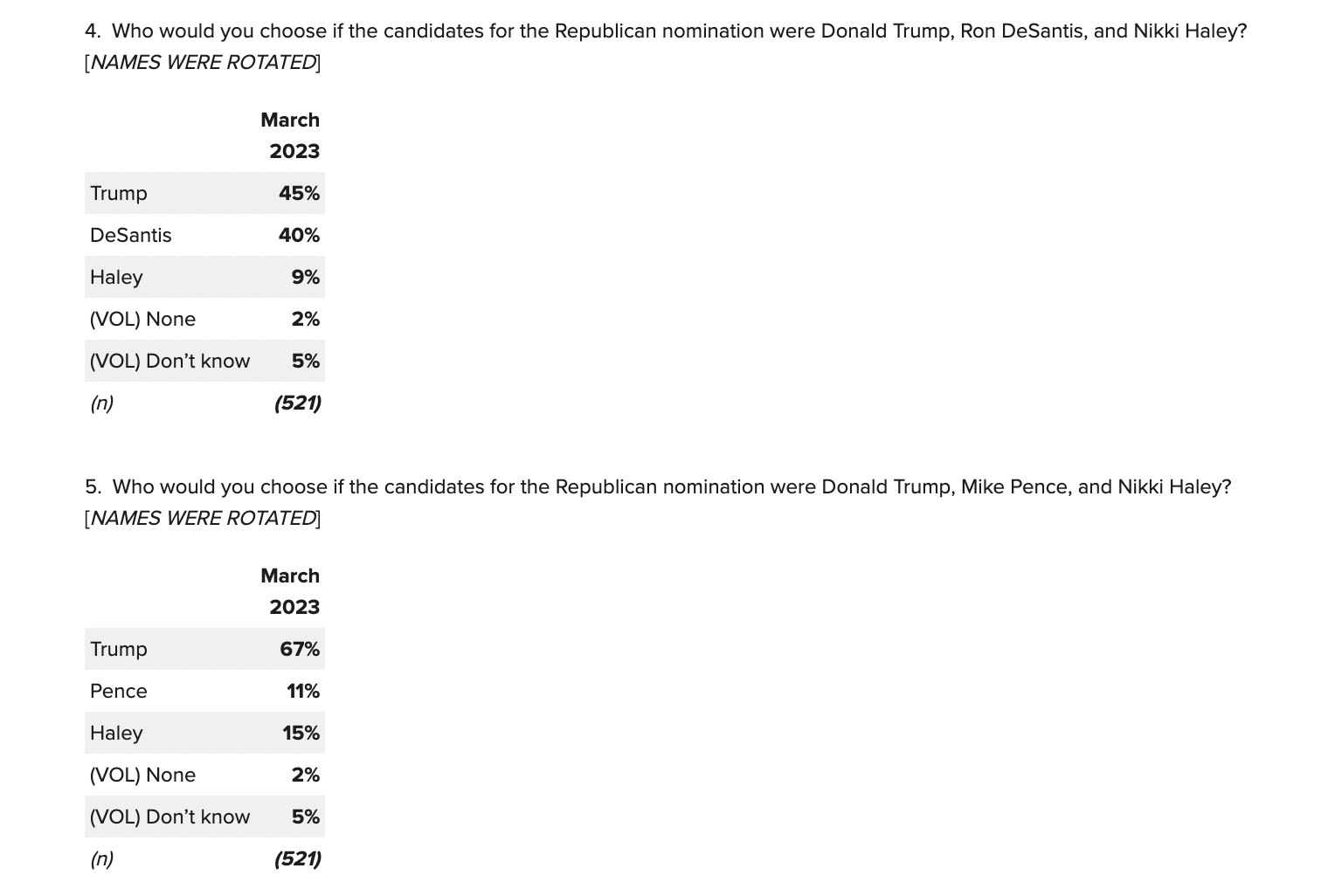


A new Monmouth poll of the national Republican primary is gaining attention. While for understandable reasons, most of the focus has been on the swing toward Donald Trump, what I’m paying more attention to is the difference between Ron DeSantis and the third place contender who, as in other polls, isn’t close.
It should be noted that the numbers cited by Cohn were the results when respondents weren’t given a list of candidates. When given a list of candidates, it was a bit tighter: Trump 44 percent, DeSantis 36 percent, Pence 7 percent, and Haley at 6 percent. Either way, at this stage of the race, national primary polls mean virtually nothing in predicting the outcome of a nomination that will be decided next year on a state-by-state basis. But they can tell us something about the broad contours of the race, and effect the decisions of candidates considering whether to enter, as well as donors deciding where to park their money.
For those who don’t want to see a repeat of 2016, the nightmare scenario is a bunch of candidates jump into the race and split the anti-Trump vote, allowing Trump to win because of his dedicated supporters even though a majority of the party may be eager to move on.
As I observed back in December, one way in which this time is already shaping up to be different is that in early 2015, there was no clear frontrunner and all candidates were bunched closely together. This is what motivated so many candidates to jump into the race and stay in it. Back then everybody assumed Trump would falter at some point, so there was no reason for the other candidates to drop out because anybody had reason to believe they had as good a shot as anybody else of being the last one standing.
Reminder that this was the state of play on the day Trump announced he was running (June 16, 2015), according to the RealClearPolitics average:
Jeb Bush: 10.8 percent
Scott Walker: 10.6 percent
Marco Rubio: 10 percent
Ben Carson: 9.4 percent
Mike Huckabee: 8.6 percent
Rand Paul: 8.2 percent
What I see in the new Monmouth poll, which is consistent with what I’ve seen in most polls, is Trump and DeSantis battling for first, but nobody in a remotely close third. That DeSantis is by far the strongest challenger to Trump becomes even more clear when looking at other hypothetical matchups in the Monmouth poll, which suggests that DeSantis is winning over voters who are unattainable to other non-Trump candidates.

If other potential rivals remain mired in the low single-digits, some will choose not to run, and others will not be able to raise enough money to sustain campaigns.
At this stage in the race, it’s less of a problem if DeSantis loses ground to Trump than if another rival — such as Nikki Haley or Mike Pence — starts getting into the double digits and appearing more viable. Then, that other candidate can start to command money, media attention, and justify staying in the race long enough to siphon off a sufficient number of votes in early states to make life harder for DeSantis.
But if the race stays broadly as it is, when DeSantis announces, he can make his pitch to donors as the only candidate with a realistic shot of taking down Trump.
